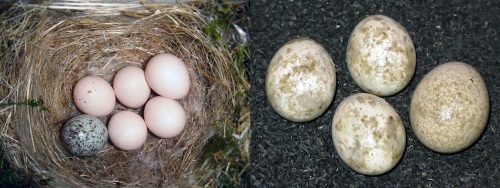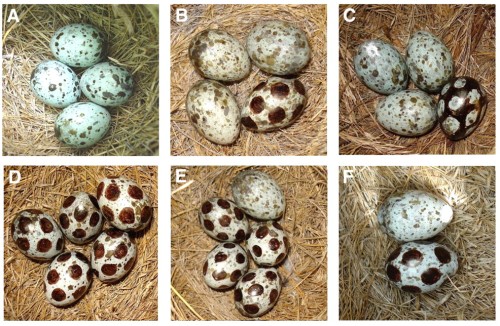by Piter Kehoma Boll
![]() The study of animal behavior is an important approach to understand several aspects on the ecology and the evolution of living beings, both from the analyzed animals themselves and the species with which they interact. For example, understanding how a bee recognizes a flower as a food source and how it approaches it may explain a lot about the physiology and the evolution of the flower and vice-versa, thus clarifying why such a combination of characters is the one that is found in the current population.
The study of animal behavior is an important approach to understand several aspects on the ecology and the evolution of living beings, both from the analyzed animals themselves and the species with which they interact. For example, understanding how a bee recognizes a flower as a food source and how it approaches it may explain a lot about the physiology and the evolution of the flower and vice-versa, thus clarifying why such a combination of characters is the one that is found in the current population.
As with virtually any type of study in biology, a research may be done with sampling or experiments. By sampling you obtain non-manipulated information directly from the environment. You collect or observe a small sample of the whole and infer the general situation of the population based on it. On the other hand, in an experiment you manipulate the environment and watches how the organisms will react to the different stimuli presented to them and, from this, you develop your conclusion.
For example, if you want to know what a species of frog eats, you may find out by sampling, observing some frogs in the wild while they feed or capturing some and examining their stomach contents. You may also offer them different kinds of food, either in the environment or in the lab, and observe how the frogs reacts to each one.
Thus, in experiments you control the stimuli the species receives from the environment. This is the point where things start to get nasty. May the stimuli have artificial elements, i.e., elements that cannot be found by the animal in its habitat?
The opinions about it are divergent and recently led to a “formal fight” published in the journal Ethology:
On one side is a group of researchers from several universities around the world (Hauber et al., 2015) that defends the use of artificial stimuli to analyze behavior. They use as a model the studies on the rejection of eggs of parasitic birds by parasitized birds, a well-studied phenomenon.
First, let us contextualize this phenomenon briefly:
Several bird species, mainly cuckoos, do not incubate their own eggs. Instead of doing it, they lay them in the nests of birds of other species and hope that the poor creatures incubate and later feed the chicks as if they were their own. As a result, natural selection favors cuckoos whose eggs are more similar to the ones of the parasitized bird and also favors the parasitized birds that better distinguish their eggs from the ones of the intruders. It is a typical evolutionary race.

Find the intruder. The similarity between the egg of the parasite and the parasitized can vary greatly. Photos by wikipedia user Galawebdesign (left)* and by Grüner Flip (right).
In experimental studies on egg rejection by parasitized birds, it is common to use artificial eggs that exaggerate features of natural eggs. This includes, for example, changing color and size in order to understand which is the most relevant for the bird to recognize the eggs as being yours or not. However, can we trust the results of such experiments using artificial elements?
Haubert et al. (2015) think that we can. Their arguments in favor of the use of such artificial stimuli are the following:
- Real eggs of the studied species are difficult to get in large quantities and could cause significant impacts over the populations if used. So, artificial eggs ensure the integrity of populations.
- It is difficult to get a set of natural eggs similar enough to allow the necessary repetitions to validate the test. After all, a result is only considered valid if it is recorded several times in face of the same stimulus. Artificial eggs allow identical copies and, thus, true repetitions.
- Natural eggs vary in several aspects at the same time, such as color, size, form, texture… In artificial eggs it is possible to control these aspects and allow only one to show free variation, so isolating the influence of each one during the recognition by the bird.
- A variation beyond the ones found in the wild may help to find populations with different degrees of perception of strange eggs and consequently where are the sites of higher selective pressure.

Original eggs of the parasitized species painted to exaggerate color features. Photos by István Zsoldos. Extracted from Moskát et al. 2010.
Not everyone looks so favorably to such an unrestrained use of artificial stimuli. Soon after the opinion of Hauber et al. we find the reply of David C. Lahti (2015) who faces all by himself the “artificialist” army. Lahti shows some aversion to such exaggerate use of artificial elements that many times are not used in a responsible manner.
Suggesting a more restrict use of artificial elements, he argues the following:
- Our perception of the environment is different from the one of the species we are studying. For instance, a bird sees a much wider range of colors than we do. When we paint an artificial egg black and white in order to simulate a natural black and white egg, we don’t know whether the bird really sees both eggs with the same colors. So, while we suppose that the eggs look similar by our perception, the reality from the bird’s point of view can be very different.
- When we try to create a set of artificial eggs that vary in only one aspect, such as the size of the spots on the shell, for instance, in order to control the influence of this stimulus only, we always end up including secondary stimuli that are not measured, such as the paint used to make the spots. If the birds shows a different response to eggs with small spots (natural ones) when compared to eggs with large spots (artificial ones), how can we know that the difference was not caused by the perception of the paint, either chemically or visually, by the animal? It would be necessary to perform tests that would discard this possibility, but it does not happen usually.
- Exaggerated artificial stimuli may go beyond the species’ range of recognition. An egg with a color too different from any color variation found in the environment could cause the bird not to see it as an egg, which would lead to problems in the interpretation of the results.
Concerning this last argument, Hauber et al. emphasize that is important to take care on a priori interpretations on the species behavior. That is to say, we cannot guess what the bird is thinking. The fact that the bird removes the parasite’s eggs from the nest or not does not mean that it is capable of recognize the egg as an intruder, or even as an egg. The way the bird interprets the stimulus is not as important as its response to it.
Therefore, we can conclude that artificial stimuli can be advantageous and in several circumstances they are the only available alternative. It is important, however, to take care with their use and try to be sure that secondary features, generally neglected, are not considered important by the animal.
– – –
References:
Hauber, M.; Tong, L.; Bán, M.; Croston, R.; Grim, T.; Waterhouse, G.; Shawkey, M.; Barron, A.; & Moskát, C. 2015. The Value of Artificial Stimuli in Behavioral Research: Making the Case for Egg Rejection Studies in Avian Brood Parasitism Ethology, 121 (6), 521-528 DOI: 10.1111/eth.12359
Lahti, D. 2015. The Limits of Artificial Stimuli in Behavioral Research: The Umwelt Gamble Ethology, 121 (6), 529-537 DOI: 10.1111/eth.12361
Moskat, C.; Ban, M.; Szekely, T.; Komdeur, J.; Lucassen, R.; van Boheemen, L.; & Hauber, M. 2010. Discordancy or template-based recognition? Dissecting the cognitive basis of the rejection of foreign eggs in hosts of avian brood parasites Journal of Experimental Biology, 213 (11), 1976-1983 DOI: 10.1242/jeb.040394
– – –
* 
This work is licensed under a Creative Commons Attribution-ShareAlike 3.0 Unported License.
